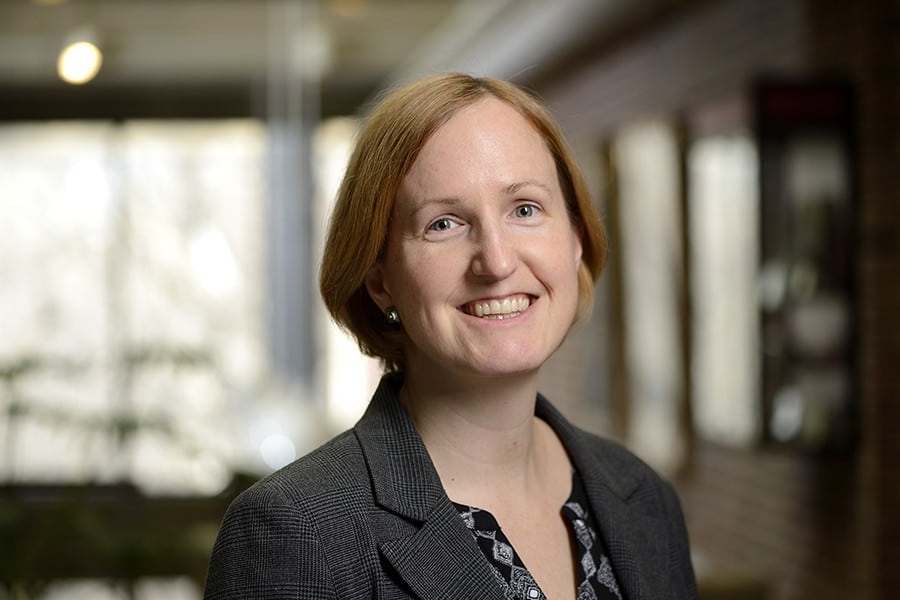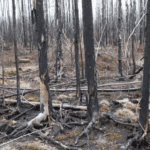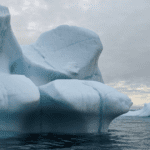Your first animal dissection—it’s a task that many of us experienced in high school or heard about from friends. When Sabine Stanley thinks back on her first dissection, she laughs and says her only thought was “Nope, not for me!”. One might have expected Stanley’s first dissection to be an easy task as she excelled at math and science. In fact, her family assumed that she would become a medical doctor. But maybe becoming a surgeon just wasn’t written in the stars for Stanley.

Image: John Hopkins Univesity
Although the dissection didn’t pan out, more enjoyable moments in high school did kindle Stanley’s fascination for physics. She liked watching Star Trek: The Next Generation, for example. “I was hooked on it in second and third year of high school,” she says. “After that, I wanted to learn more about space. I remember buying lots of astronomy-related magazines like Sky & Telescope and trying to read the articles in there. I also plastered my room with the pictures in the magazines.”
Her dedication to space continued after high school, when she decided to study physics and astronomy at the University of Toronto (U of T). Following her undergraduate degree, she moved to Boston to study planetary sciences at Harvard University. She completed an MA and PhD in geophysics at Harvard, fulfilling her family’s assumption that she would become a doctor (just not a medical one). When asked why she chose planetary sciences specifically, she says, “I was first interested in cosmology but in the end, I wanted something more tangible…I saw that the research really benefits from collaborations between many people from different fields and with different perspectives.” This practical and logical approach would take Stanley far in her career.
During graduate school, her research revolved around planetary magnetic fields. She studied the structures and mechanisms of the magnetic fields of Uranus and Neptune, our solar system’s ice giants. “These two planets’ magnetic fields are quite different from the other planets in the solar system in that they are multipolar. The other planets all have dipolar-dominated fields, including Earth, which has a north geomagnetic pole and a south geomagnetic pole. I determined that if their dynamos (interior mechanisms that create magnetic fields in planets) are generated in a specific way, then multipolar fields would result.” This research provided important groundwork for advancing our understanding of the inner structures and dynamics of these planets.
After Harvard, Stanley moved to the Massachusetts Institute of Technology (MIT) in Cambridge for a year, working as a postdoctoral researcher in the Department of Earth, Atmospheric and Planetary Sciences. In 2005, she came back to her home base, U of T, to accept a faculty position, where she would stay until 2017.
Her research at U of T built upon the work she began during her graduate studies. She continued studying planetary magnetic fields, adding such bodies as Earth, Earth’s Moon, Mars, Saturn, Jupiter, exoplanets, asteroids, and planetesimals (tiny planets that could potentially combine to form larger planets) to her research repertoire. She often worked with data collected during planetary missions. One of her projects used data collected during NASA’s 1972 Apollo 17 mission, the final mission in the Apollo program which sent people to the moon. Stanley used the gravity data collected to determine properties about the density structure below the surface of the Taurus-Littrow Valley, an area on the moon that was chosen as the Apollo 17 landing site because of its accessibility and the fact that it has both ancient material and young volcanic material available for sampling.
Another mission whose data she worked with was the Cassini mission, a collaboration between NASA, the European Space Agency, and the Italian Space Agency. The objective of this mission is to collect unprecedented data about Saturn. Looking to the future, she is excited to work with data from the Juno mission, whose goal according to NASA is to “improve our understanding of the solar system’s beginnings by revealing the origin and evolution of Jupiter.” These missions are as ambitious as they have been successful. “New missions collect data that change everything,” says Stanley. “The data is going to change textbooks!”
During her time at U of T, Stanley received many prestigious awards, including the Early Researcher Award from the Ontario Ministry of Research, Innovation and Science (2009-2013), the Ranjini Ghosh Excellence in Teaching Award from the U of T (2010), and the Outstanding Teaching Award from the Faculty of Arts & Science at the U of T (2015). She has also been named a Sloan Research Fellow (2011-2013), a University of Toronto Science Leadership Fellow (2013-2014), and a Canada Research Chair (Tier II) in Planetary Physics (2012-2017).




